Replacing salt with low-sodium salt substitutes (LSSS) for cardiovascular health in adults, children and pregnant women
- PMID: 35944931
- PMCID: PMC9363242
- DOI: 10.1002/14651858.CD015207
Replacing salt with low-sodium salt substitutes (LSSS) for cardiovascular health in adults, children and pregnant women
Abstract
Background: Elevated blood pressure, or hypertension, is the leading cause of preventable deaths globally. Diets high in sodium (predominantly sodium chloride) and low in potassium contribute to elevated blood pressure. The WHO recommends decreasing mean population sodium intake through effective and safe strategies to reduce hypertension and its associated disease burden. Incorporating low-sodium salt substitutes (LSSS) into population strategies has increasingly been recognised as a possible sodium reduction strategy, particularly in populations where a substantial proportion of overall sodium intake comes from discretionary salt. The LSSS contain lower concentrations of sodium through its displacement with potassium predominantly, or other minerals. Potassium-containing LSSS can potentially simultaneously decrease sodium intake and increase potassium intake. Benefits of LSSS include their potential blood pressure-lowering effect and relatively low cost. However, there are concerns about potential adverse effects of LSSS, such as hyperkalaemia, particularly in people at risk, for example, those with chronic kidney disease (CKD) or taking medications that impair potassium excretion.
Objectives: To assess the effects and safety of replacing salt with LSSS to reduce sodium intake on cardiovascular health in adults, pregnant women and children.
Search methods: We searched MEDLINE (PubMed), Embase (Ovid), Cochrane Central Register of Controlled Trials (CENTRAL), Web of Science Core Collection (Clarivate Analytics), Cumulative Index to Nursing and Allied Health Literature (CINAHL, EBSCOhost), ClinicalTrials.gov and WHO International Clinical Trials Registry Platform (ICTRP) up to 18 August 2021, and screened reference lists of included trials and relevant systematic reviews. No language or publication restrictions were applied.
Selection criteria: We included randomised controlled trials (RCTs) and prospective analytical cohort studies in participants of any age in the general population, from any setting in any country. This included participants with non-communicable diseases and those taking medications that impair potassium excretion. Studies had to compare any type and method of implementation of LSSS with the use of regular salt, or no active intervention, at an individual, household or community level, for any duration.
Data collection and analysis: Two review authors independently screened titles, abstracts and full-text articles to determine eligibility; and extracted data, assessed risk of bias (RoB) using the Cochrane RoB tool, and assessed the certainty of the evidence using GRADE. We stratified analyses by adults, children (≤ 18 years) and pregnant women. Primary effectiveness outcomes were change in diastolic and systolic blood pressure (DBP and SBP), hypertension and blood pressure control; cardiovascular events and cardiovascular mortality were additionally assessed as primary effectiveness outcomes in adults. Primary safety outcomes were change in blood potassium, hyperkalaemia and hypokalaemia.
Main results: We included 26 RCTs, 16 randomising individual participants and 10 randomising clusters (families, households or villages). A total of 34,961 adult participants and 92 children were randomised to either LSSS or regular salt, with the smallest trial including 10 and the largest including 20,995 participants. No studies in pregnant women were identified. Studies included only participants with hypertension (11/26), normal blood pressure (1/26), pre-hypertension (1/26), or participants with and without hypertension (11/26). This was unknown in the remaining studies. The largest study included only participants with an elevated risk of stroke at baseline. Seven studies included adult participants possibly at risk of hyperkalaemia. All 26 trials specifically excluded participants in whom an increased potassium intake is known to be potentially harmful. The majority of trials were conducted in rural or suburban settings, with more than half (14/26) conducted in low- and middle-income countries. The proportion of sodium chloride replacement in the LSSS interventions varied from approximately 3% to 77%. The majority of trials (23/26) investigated LSSS where potassium-containing salts were used to substitute sodium. In most trials, LSSS implementation was discretionary (22/26). Trial duration ranged from two months to nearly five years. We assessed the overall risk of bias as high in six trials and unclear in 12 trials. LSSS compared to regular salt in adults: LSSS compared to regular salt probably reduce DBP on average (mean difference (MD) -2.43 mmHg, 95% confidence interval (CI) -3.50 to -1.36; 20,830 participants, 19 RCTs, moderate-certainty evidence) and SBP (MD -4.76 mmHg, 95% CI -6.01 to -3.50; 21,414 participants, 20 RCTs, moderate-certainty evidence) slightly. On average, LSSS probably reduce non-fatal stroke (absolute effect (AE) 20 fewer/100,000 person-years, 95% CI -40 to 2; 21,250 participants, 3 RCTs, moderate-certainty evidence), non-fatal acute coronary syndrome (AE 150 fewer/100,000 person-years, 95% CI -250 to -30; 20,995 participants, 1 RCT, moderate-certainty evidence) and cardiovascular mortality (AE 180 fewer/100,000 person-years, 95% CI -310 to 0; 23,200 participants, 3 RCTs, moderate-certainty evidence) slightly, and probably increase blood potassium slightly (MD 0.12 mmol/L, 95% CI 0.07 to 0.18; 784 participants, 6 RCTs, moderate-certainty evidence), compared to regular salt. LSSS may result in little to no difference, on average, in hypertension (AE 17 fewer/1000, 95% CI -58 to 17; 2566 participants, 1 RCT, low-certainty evidence) and hyperkalaemia (AE 4 more/100,000, 95% CI -47 to 121; 22,849 participants, 5 RCTs, moderate-certainty evidence) compared to regular salt. The evidence is very uncertain about the effects of LSSS on blood pressure control, various cardiovascular events, stroke mortality, hypokalaemia, and other adverse events (very-low certainty evidence). LSSS compared to regular salt in children: The evidence is very uncertain about the effects of LSSS on DBP and SBP in children. We found no evidence about the effects of LSSS on hypertension, blood pressure control, blood potassium, hyperkalaemia and hypokalaemia in children.
Authors' conclusions: When compared to regular salt, LSSS probably reduce blood pressure, non-fatal cardiovascular events and cardiovascular mortality slightly in adults. However, LSSS also probably increase blood potassium slightly in adults. These small effects may be important when LSSS interventions are implemented at the population level. Evidence is limited for adults without elevated blood pressure, and there is a lack of evidence in pregnant women and people in whom an increased potassium intake is known to be potentially harmful, limiting conclusions on the safety of LSSS in the general population. We also cannot draw firm conclusions about effects of non-discretionary LSSS implementations. The evidence is very uncertain about the effects of LSSS on blood pressure in children.
Copyright © 2022 The Authors. Cochrane Database of Systematic Reviews published by John Wiley & Sons, Ltd. on behalf of The Cochrane Collaboration.
Conflict of interest statement
AB: partly supported by the Research, Evidence and Development Initiative (READ‐It). READ‐It (project number 300342‐104) is funded by UK aid from the UK government; however, the views expressed do not necessarily reflect the UK government's official policies; partial support paid to my institution for a scoping review on total fat intake and health outcomes other than measures of unhealthy weight gain (2020); a systematic review on low sodium salt substitutes and cardiovascular health (2020‐2021); rapid scoping reviews on coconut and palm oil intake and cardiovascular health (2021); a scoping review on the health effects of tropical oil consumption (2022).
MV: partly supported by the Research, Evidence and Development Initiative (READ‐It). READ‐It (project number 300342‐104) is funded by UK aid from the UK government; however, the views expressed do not necessarily reflect the UK government's official policies; partial support paid to my institution for a scoping review on total fat intake and health outcomes other than measures of unhealthy weight gain (2020); a systematic review on low sodium salt substitutes and cardiovascular health (2020‐2021); rapid scoping reviews on coconut and palm oil intake and cardiovascular health (2021); a scoping review on health effects of tropical oil consumption (2022).
AS: partly supported by the Research, Evidence and Development Initiative (READ‐It). READ‐It (project number 300342‐104) is funded by UK aid from the UK government; however, the views expressed do not necessarily reflect the UK government's official policies.
CN: partly supported by the Research, Evidence and Development Initiative (READ‐It). READ‐It (project number 300342‐104) is funded by UK aid from the UK government; however, the views expressed do not necessarily reflect the UK government's official policies; partial support paid to my institution for a scoping review on total fat intake and health outcomes other than measures of unhealthy weight gain; a systematic review on low sodium salt substitutes and cardiovascular health; rapid scoping reviews on coconut and palm oil intake and cardiovascular health; a scoping review on the health effects of tropical oil consumption.
*CN is Co‐director of Cochrane Nutrition, and AB and MV are members of the Cochrane Nutrition local coordination team. These authors had no involvement in the editorial process for this review.
Figures


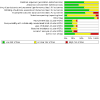


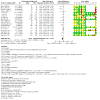

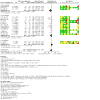

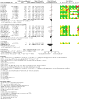
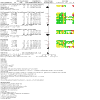
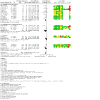



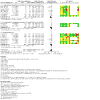

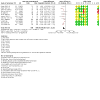
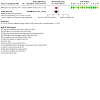
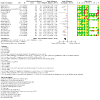




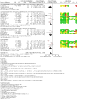

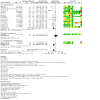
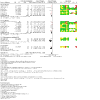
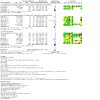
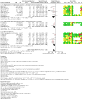

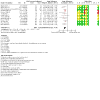
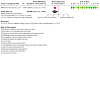


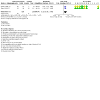
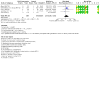
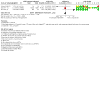
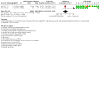
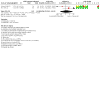

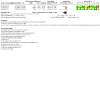
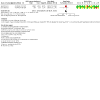
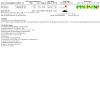

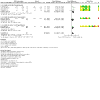
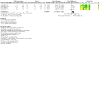
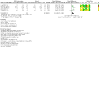

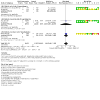
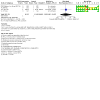
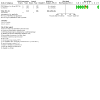
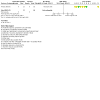

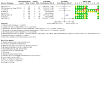
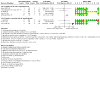

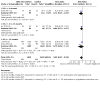
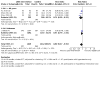




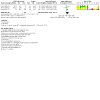
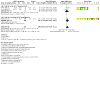

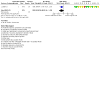

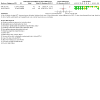
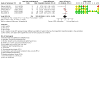
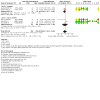
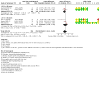

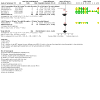
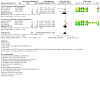
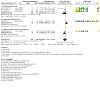
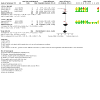
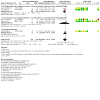
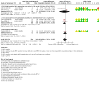

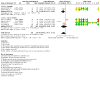
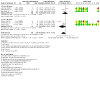
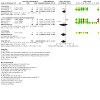
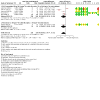
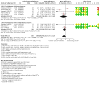

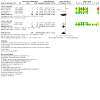
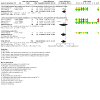
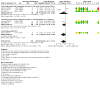
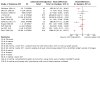



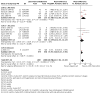

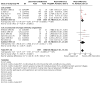
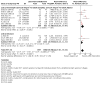

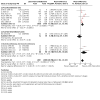

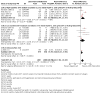
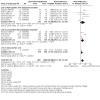
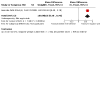
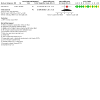

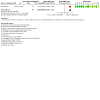


References
References to studies included in this review
Allaert 2013 {published data only}
-
- Allaert FA. Double-blind, randomized, crossover, controlled clinical trial of NaCl + Chitosan 3% versus NaCl on mild or moderate high blood pressure during the diet and lifestyle improvement period before possible prescription of an antihypertensive treatment. International Angiology 2013;32(1):94-101. - PubMed
Allaert 2017 {published data only}
-
- Allaert FA. Double blind, randomized, controlled clinical trial of NaCl + Chitosan 3% vs. NaCl on the decrease of blood pressure induced by a low salt diet in healthy prehypertensive volunteers. Archives of Cardiovascular Diseases Supplements 2019;11(Suppl.3):e372. [DOI: 10.1016/j.acvdsp.2019.05.098] - DOI
Arzilli 1986 {published data only}
-
- Arzilli F, Taddei S, Graziadei L, Bichisao E, Giovannetti R, Salvetti A. Potassium-rich and sodium-poor salt reduces blood pressure in hospitalized patients. Journal of Hypertension 1986;4(5 Suppl 1):S347-50. - PubMed
Bernabe‐Ortiz 2014 {published data only}
-
- NCT01960972. Launching a salt substitute to reduce blood pressure at the population level in Peru. clinicaltrials.gov/ct2/show/NCT01960972 (first received 11 October 2013).
Chang 2006 {published data only}
CSSS Collaborative Group 2007 {published data only}
-
- Jiang X, Hu J, Li N, Wu Y. Effects of a reduced sodium increased potassium salt substitute on periphral and central blood pressure among high risk individuals in rural China: a randomised controlled trial. Journal of Hypertension 2009;27 Suppl 4:S276.
-
- Li N, Prescott J, Wu Y, Barzi F, Yu X, Zhao L, et al, China Salt Substitute Study Collaborative Group. The effects of a reduced-sodium, high-potassium salt substitute on food taste and acceptability in rural northern China. British Journal of Nutrition 2009;101(7):1088-93. [DOI: 10.1017/S0007114508042360] - DOI - PubMed
Geleijnse 1994 {published data only}
-
- Geleijnse JM, Witteman JC, Bak AA, Den Breeijen JH, Grobbee DE. Long-term moderate sodium restriction does not adversely affect the serum HDL/total cholesterol ratio. Journal of Human Hypertension 1995;9(12):975-9. - PubMed
-
- Geleijnse JM, Witteman JC, Bak AA, Den Breeijen JH, Grobbee DE. Reducing blood pressure by use of a low sodium high potassium, high magnesium mineral salt in older persons with mild to moderate hypertension [Verlaging van de bloeddruk door gebruik van een mineraalzout met een verlaagd natriumgehalte en een verhoogd kalium- en magnesiumgehalte bij ouderen met milde tot matige hypertensie]. Nederlands Tijdschrift voor Geneeskunde 1995;139:512-8.
-
- Geleijnse JM, Witteman JC, Bak AA, Den Breeijen JH, Grobbee DE. Reduction in blood pressure with a low sodium, high potassium, high magnesium salt in older subjects with mild to moderate hypertension. BMJ (Clinical research ed.) 1994;309(6952):436-40. [DOI: 10.1136/bmj.309.6952.436.] - DOI - PMC - PubMed
Gilleran 1996 {published data only}
-
- Gilleran G, O'Leary M, Bartlett WA, Vinall H, Jones AF, Dodson PM. Effects of dietary sodium substitution with potassium and magnesium in hypertensive type II diabetics: a randomised blind controlled parallel study. Journal of Human Hypertension 1996;10(8):517-21. - PubMed
Hu 2018 {published and unpublished data}
-
- Hu J-H, Zhao L-C, Li X, Wu Y-F. Effects of salt substitution on blood pressure using home measurements in essential hypertensive patients: a double-blinded, randomized controlled trial. Chinese Journal of Hypertension 2014;22(1):42-6.
-
- Visser ME. Low sodium salt Substitutes (LSSS) systematic review: request for outcome data [personal communication]. Email to: J Hu 10 July 2020.
Kawasaki 1998 {published data only}
Li 2014 {published data only}
-
- Li Z, Feng X, Wu T, Yan L, Elliott P, Wu Y. Randomised trial on effect of involving media reporters in salt reduction programme to increase media reports and the public's knowledge, belief and behaviors on salt and health: Changzhi reporters trial. PLoS One 2021;16(7):e0252989. [DOI: 10.1371/journal.pone.0252989] - DOI - PMC - PubMed
-
- Li Z, Yang H, Wu Y, Elliott P, Du S, X Feng, et al. Relationship of the dietary sodium substitution with low sodium and high potassium salt with the blood pressure among middle aged and elderly people: a randomized controlled study [低钠富钾替代盐与中老年人群血压关系的 随机对照研究]. Chinese Journal of Geriatrics 2014;33(4):365-7.
Li 2016 {published data only}
-
- Chu H, Zhang J, Fetters MD, Niu W, Li H, Li N, et al. A mixed methods process evaluation of a clustered-randomized controlled trial to determine the effects of community-based dietary sodium reduction in rural China. Frontiers in Medicine 2021;8:646576. [DOI: 10.3389/fmed.2021.646576] - DOI - PMC - PubMed
-
- Jardine M, Li N, Ninomiya T, Feng X, Zhang J, Shi J, et al. Dietary sodium reduction reduced albuminuria in 1,903 rural Chinese: a cluster randomised trial. Nephrology 2014;19 Suppl 4:28.
-
- Li N, Yan L, Niu W, Yao C, Feng X, Zhang J, et al. China Rural Health Initiative - Sodium Reduction Study: the effects of a community-based sodium reduction program on 24hr urinary sodium and blood pressure in rural China. Circulation 2013;128(24):2707.
-
- Li N, Yan LL, Niu W, Labarthe D, Feng X, Shi J. A large-scale cluster randomized trial to determine the effects of community-based dietary sodium reduction - the China Rural Health Initiative Sodium Reduction Study. American Heart Journal 2013;166(5):815-22. [DOI: 10.1016/j.ahj.2013.07.009] - DOI - PMC - PubMed
Mu 2003 {published data only}
-
- Mu J-J, Liu Z-Q, Yang J, Liang Y-M, Zhy D-J, Wang Y-X, et al. Long term observation in effects of potassium and calcium supplementation on arterial blood pressure and sodium metabolism in adolescents with higher blood pressure. Zhonghua Yu Fang Yi Xue Za Zhi [Chinese Journal of Preventive Medicine] 2003;37(2):90-2. - PubMed
Mu 2009 {published data only}
Neal 2021 {published data only}
-
- Huang L, Woodward M, Stepien S, Tian M, Yin X, Hao Z, et al. Spot urine samples compared with 24-h urine samples for estimating changes in urinary sodium and potassium excretion in the China Salt Substitute and Stroke Study. International Journal of Epidemiology 2018;47(6):1811-20. [DOI: 10.1093/ije/dyy206] - DOI - PubMed
-
- NCT02092090. China Salt Substitute and Stroke Study (SSaSS) [A large-scale cluster randomized trial to determine the effects of sodium reduction on stroke: the China Salt Substitute and Stroke Study (SSaSS)]. clinicaltrials.gov/ct2/show/NCT02092090 (first received 19 March 2014).
Omvik 1995 {published data only}
Pan 2017 {published data only}
-
- Lai YH, Chen JR, Jeng JS, Chen CM, Bai CH, Lin RT, et al. The effect of intervention with potassium and magnesium-enriched salt on neurological performance in stroke patients. Cerebrovascular Diseases 2014;38(Suppl.1):98. [DOI: 10.1159/000367674] - DOI
-
- NCT02910427. The effect of intervention with potassium and/or magnesium-enriched salt on neurological performance of stroke patients. https://clinicaltrials.gov/ct2/show/NCT02910427 (first received 22 September 2016).
-
- Pan W-H, Lai Y-H, Yeh W-T, Chen J-R, Jeng J-S, Bai C-H, et al. Intake of potassium- and magnesium-enriched salt improves functional outcome after stroke: a randomized, multicenter, double-blind controlled trial. American Journal of Clinical Nutrition 2017;106(5):1267-73. [DOI: 10.3945/ajcn.116.148536] - DOI - PubMed
Pereira 2005 {published data only}
-
- Pereira MA, Galvão R, Zanella MT. Effects of potassium supplementation by salt on arterial blood pressure and insulin resistance in hypertensive obese patients on diuretic therapy [Efeitos da suplementação de potássio via sal de cozinha sobre a pressão arterial e a resistência à insulina em pacientes obesos hipertensos em uso de diuréticos]. Revista de Nutrição [Brazilian Journal of Nutrition] 2005;18(1):5-17. [DOI: 10.1590/S1415-52732005000100001] - DOI
Sarkkinen 2011 {published data only}
-
- ISRCTN01739816. The effect of replacing regular salt with SmartSalt® mineral salt on blood pressure in middle-aged subjects with high blood pressure or with mild hypertension: a randomised controlled two-arm human study. doi.org/10.1186/ISRCTN01739816 (first received 11 November 2009).
-
- Sarkkinen ES, Kastarinen MJ, Niskanen TH, Karjalainen PH, Venäläinen TM, Udani JK, et al. Feasibility and antihypertensive effect of replacing regular salt with mineral salt - rich in magnesium and potassium - in subjects with mildly elevated blood pressure . Nutrition Journal 2011;10(1):88. [DOI: 10.1186/1475-2891-10-88] - DOI - PMC - PubMed
Suppa 1988 {published data only}
-
- Suppa G, Pollavini G, Alberti D, Savonitto S. Effects of a low-sodium high-potassium salt in hypertensive patients treated with metoprolol: a multicentre study. Journal of Hypertension 1988;6(10):787-90. - PubMed
Toft 2020 {published data only}
-
- Bjoernsbo KS, Riis NL, Andreasen AH, Petersen J, Lassen AD, Trolle E, et al. Salt reduction intervention in families investigating metabolic, behavioral and health effects of targeted intake reductions: study protocol for a four months three-armed, randomized, controlled “real-life” trial. International Journal of Environmental Research and Public Health 2019;16(19):3532. [DOI: 10.3390/ijerph16193532] - DOI - PMC - PubMed
-
- Riis NL, Bjoernsbo KS, Toft U, Trolle E, Hyldig G, Hartley IE, et al. Impact of salt reduction interventions on salt taste sensitivity and liking, a cluster randomized controlled trial. Food Quality and Preference 2021;87:104059. [DOI: 10.1016/j.foodqual.2020.104059] - DOI
-
- Toft U, Riis NL, Lassen AD, Trolle E, Andreasen AH, Frederiksen AK, et al. The effects of two intervention strategies to reduce the intake of salt and the sodium-to-potassium ratio on cardiovascular risk factors. A 4-month randomised controlled study among healthy families. Nutrients 2020;12(5):1467. [DOI: 10.3390/nu12051467] - DOI - PMC - PubMed
-
- Visser ME. Request for information on the composition of Viva salt [personal communication]. Email to: A Woitrin 22 September 2021.
Yu 2021 {published data only}
-
- NCT03909659. The effects on blood pressure of salt substitute among adults with hypertension in India [A randomized-controlled trial to determine the effects on blood pressure of a reduced-sodium added-potassium salt substitute among adults with hypertension in India]. https://clinicaltrials.gov/ct2/show/NCT03909659 (first received 10 April 2019).
-
- Thout SR, Yu J, Tian M, Huffman MD, Arnott C, Li Q, et al. Rationale, design, and baseline characteristics of the Salt Substitute in India Study (SSiIS): the protocol for a double-blinded, randomized-controlled trial. Journal of Clinical Hypertension 2020;22(8):1504-12. [DOI: 10.1111/jch.13947] - DOI - PMC - PubMed
-
- Yu J, Thout SR, Li Q, Tian M, Marklund M, Arnott C, et al. Effects of a reduced-sodium added-potassium salt substitute on blood pressure in rural Indian hypertensive patients: a randomized, double-blind, controlled trial. American Journal of Clinical Nutrition 2021;114(1):185-93. [DOI: 10.1093/ajcn/nqab054.] - DOI - PubMed
Zhang 2015 {published data only}
-
- Zhang H, Li DF, Li WW, Wang Q, Brunner HR, Zhang BQ, et al. Safety of long-term enriched potassium salt consumption and effect on blood pressure in Chinese. Journal of Hypertension 2015;33 e-Suppl 1:e148-9.
-
- Zhang H, Wang Q, Brunner HR, Li W, Zhang B, Dong Y, et al. Effects of long-term enriched potassium salt consumption on premature death in Chinese living in nursing houses - preliminary analysis. Journal of Hypertension 2018;36 e-Suppl 3:e286-7.
-
- Zhang H, Wang Q, Guo Y, Li D, Zhang B, Dong Y, et al. Effect of long-term enriched potassium salt consumption on all causes mortality in Chinese living in nursing houses - a preliminary analysis. Journal of Hypertension 2016;34 e-Suppl 1:e52-3.
Zhao 2014 {published data only}
-
- NCT01429246. China Salt Substitute Study in Tibet (CSSS-Tibet) [China Salt Substitute Study in Tibet: efficacy of salt substitute in reducing blood pressure in hypertensive adults]. clinicaltrials.gov/ct2/show/NCT01429246 (first received 7 September 2011).
-
- Zhao X, Ke L, Li S, Li N, Yan LL, Ba S, et al. Effects on blood pressure of a low-sodium, high-potassium salt substitute among Tibetan Chinese: a randomized controlled trial. Circulation 2010;122(2):e353.
Zhou 2009 {published data only}
Zhou 2013 {published data only}
-
- Zhou B, Webster J, Fu L-Y, Wang H-L, Wu X-M, Wang W-L, et al. Intake of low sodium salt substitute for 3 years attenuates the increase in blood pressure in a rural population of North China - a randomized controlled trial. International Journal of Cardiology 2016;215:377-82. [DOI: 10.1016/j.ijcard.2016.04.073] - DOI - PubMed
References to studies excluded from this review
Allaert 2015 {published data only}
-
- Allaert F, Melero C. CO-42: Observational study of the effect of substituting NaCl with NaCl+ chitosan 3% (Symbiosal®) in the diet of elderly subjects on their blood pressure values [Étude observationnelle de l‘effet d‘une substitution du NaCl par du NaCl + chitosan 3% (Symbiosal®) dans l‘alimentation des personnes âgées sur leurs paramètres tensionnels]. Annales de Cardiologie et d'Angéiologie 2015;64(Supplement 1):S19.
-
- Allaert FA. Observational study of the effect of substituting NaCl with NaCl+Chitosan 3% (Symbiosal) in the diet of elderly subjects on their blood pressure values. Minerva Cardioangiologica 2015;63(6):515-23. - PubMed
Baek 2015 {published data only}
-
- Baek SH, Ahn JW, Lee HR, Cho SH, Kim JH. Anti-hypertensive effect of a solar salt diet in elderly hypertensive patients: a preliminary randomized, double-blind clinical trial. Korean Journal of Health Promotion 2015;15(3):98-107.
Barros 2013 {published data only}
-
- Barros CL. Substitution of Regular Salt with Light Salt: Impact on Blood Pressure of Hypertensive Patients (Impacto da Substituição do Sal Convencional Pelo Sal Light sobre a Pressão Arterial de Hipertensos [Master's thesis]. Goiânia (Brazil): Universidade Federal de Goiás Faculdade de Nutrição Programa de Pós-Graduação em Nutrição e Saúde, 2013.
Barros 2015 {published data only}
ChiCTR1800016804 {unpublished data only}
-
- ChiCTR1800016804. Home cook intervention to reduce salt intake: in China - a cluster randomized controlled trial. www.chictr.org.cn/showprojen.aspx?proj=25400 (first received 25 June 2018).
ChiCTR1800018119 {published data only}
-
- ChiCTR1800018119. A community-based comprehensive intervention to reduce salt intake in the Chinese population: a cluster randomized controlled trial. www.chictr.org.cn/com/25/showproj.aspx?proj=30631 (first received 31 August 2018).
ChiCTR1800019727 {published data only}
-
- ChiCTR1800019727. Effects of salt substitution on blood pressure using home blood pressure, ambulatory blood pressure and clinical blood pressure in essential hypertensive patients: a randomized controlled trial. www.chictr.org.cn/showprojen.aspx?proj=31036 (first received 25 November 2018).
ChiCTR2000033349 {published data only}
-
- ChiCTR2000033349. Zhejiang province pilot of intervention evaluation project of salt reduction and prevention and control of hypertension: a cluster randomized controlled trial. www.chictr.org.cn/hvshowproject.aspx?id=36685 (first received 29 May 2020).
Dent 2011 {published data only}
-
- Dent A, Walmsley D, Dhandapani S. Hyperkalaemia is a risk with low sodium salt in vulnerable patients. British Medical Journal 2011;343:2. - PubMed
Doorenbos 2003 {published data only}
Farrand 2019 {published data only}
He 2020 {published data only}
-
- He FJ, Tan MN, Song J, MacGregor GA. Salt substitution to lower population blood pressure. Nature Medicine 2020;26(3):313-4. - PubMed
Hueston 1989 {published data only}
-
- Hueston WJ. Use of salt substitutes in the treatment of diuretic-induced hypokalemia. Journal of Family Practice 1989;29(6):623-6. - PubMed
Itoh 1997 {published data only}
-
- Itoh K, Kawasaki T. Clinical and nutritional study of low sodium, high potassium and high magnesium salt on sensory test and electrolyte balance. Japanese Journal of Nutrition 1997;55:263-72.
Janda 2017 {published data only}
-
- Janda J, Veleminsky M, Sulakova T, Prochazka B, Eliasek J, Stransky P, et al. Effect of the DASH-diet and salt Kardisal on blood pressure in adolescents with prehypertension (cooperative multicentre interventional study). Neuroendocrinology Letters 2017;38(8):544-8. - PubMed
Jeffrey 1984 {published data only}
JPRN‐UMIN000012560 {published data only}
-
- JPRN-UMIN000012560. Effect of using low sodium seasonings (miso and soy sauce) or monitoring salt concentration of dishes prepared at home for 12 weeks on the reduction of sodium intake among healthy middle-aged Japanese individuals: a randomized, controlled, crossover trial. upload.umin.ac.jp/cgi-open-bin/icdr_e/ctr_his_list.cgi?recptno=R000013246 (first received 12 December 2013).
Karppanen 1984 {published data only}
-
- Karppanen H, Tanskanen A, Tuomilehto J, Puska P, Vuori J, Jantti V, et al. Safety and effects of potassium-containing and magnesium-containing low sodium-salt mixtures . Journal of Cardiovascular Pharmacology 1984;6:S236-43. - PubMed
Katz 1999 {published data only}
-
- Katz A, Rosenthal T, Maoz C, Peleg E, Zeidenstein R, Levi Y. Effect of a mineral salt diet on 24-h blood pressure monitoring in elderly hypertensive patients. Journal of Human Hypertension 1999;13(11):777-80. - PubMed
Lambert 2019 {published data only}
Little 2004 {published data only}
-
- Visser ME. Request for study data [personal communication]. Email to: P Little 10 September 2021.
Maleki 2016 {published data only}
-
- Maleki A, Soltanian AR, Zeraati F, Sheikh V, Poorolajal J. The flavor and acceptability of six different potassium-enriched (sodium reduced) iodized salts: a single-blind, randomized, crossover design. Clinical Hypertension 2016;22(18):eCollection 2016. [DOI: 10.1186/s40885-016-0054-9] - DOI - PMC - PubMed
Maruya 2020 {published data only}
Matlou 1986 {published data only}
-
- Matlou SM, Isles CG, Higgs A, Milne FJ, Murray GD, Schultz E, et al. Potassium supplementation in blacks with mild to moderate essential hypertension. Journal of Hypertension 1986;4(1):61-4. - PubMed
Mu 2020 {published data only}
Nakano 2016 {published data only}
NCT02105727 {published data only}
-
- NCT02105727. Changing population salt consumption in Lithgow, Australia [A before after comparison of the effectiveness of a community-based salt reduction program done in Lithgow, Australia]. clinicaltrials.gov/ct2/show/NCT02105727 (first received 7 April 2014).
Pietinen 1981 {published data only}
-
- Pietinen P, Ruotsalainen P, Tanskanen A, Puska P. Sodium intake reduction in volunteer families by using a salt substitute and nutrition counselling. Annals of Nutrition & Metabolism 1981;25(6):371-80. - PubMed
Robare 2010 {published data only}
Salvetti 1988 {published data only}
-
- Salvetti A, Bichisao E, Caiazza A, Bartolomei G, Cagianelli MA, Federighi G, et al. The combination of a low-Na/high-K salt with metoprolol in the treatment of mild-moderate hypertension. A multicenter study. American Journal of Hypertension 1988;1(3 Pt 3):201s-5s. - PubMed
Sciarrone 1992 {published data only}
-
- Sciarrone SE, Beilin LJ, Rouse IL, Rogers PB. A factorial study of salt restriction and a low-fat/high-fibre diet in hypertensive subjects. Journal of Hypertension 1992;10(3):287-98. - PubMed
Zoccali 1985 {published data only}
-
- Zoccali C, Cumming AM, Hutcheson MJ, Barnett P, Semple PF. Effects of potassium on sodium balance, renin, noradrenaline and arterial pressure. Journal of Hypertension 1985;3(1):67-72. - PubMed
References to studies awaiting assessment
Jones 2019 {published data only}
-
- Jones D. Dietary sodium and potassium intake: an event-based randomized clinical trial. Journal of Hypertension 2019;37(Supplement 1):e252.
Neutel 1996 {published data only}
-
- Neutel J. Replacing regular salt with sodium-reduced, potassium- and magnesium-enriched mineral salt may offer non-pharmacological approach to lowering blood pressure. American Journal of Hypertension 1996;9:94A.
Voloshyna 2017 {published data only}
-
- Voloshyna I, Vizir VA, Voloshyn MA, Krivenko VI, Ponomarenko VI. Effect of potassium/magnesium enriched salt on functional capacity and quality of life in symptomatic patients with chronic heart failure. European Journal of Heart Failure 2017;19(Supplement 1):53.
References to ongoing studies
ACTRN12619000352101 {published data only}
-
- ACTRN12619000352101. Salt ALTernatives Study (SALTS): a smartphone app and dietary alternative salt to lower blood pressure for adults with high blood pressure. trialsearch.who.int/?TrialID=ACTRN12619000352101 (first received 06 March 2019).
ChiCTR08000296 {published data only}
-
- ChiCTR-TRC-08000296. China Salt trial. www.chictr.org.cn/showproj.aspx?proj=9234 (first received 30 December 2008).
ChiCTR09000538 {published data only}
-
- ChiCTR-TRC-09000538. The study on pathogeny of hypertension and the salt intervention on diet in the population of Zhangwu County. www.chictr.org.cn/showproj.aspx?proj=8997 (first received 11 September 2009).
ChiCTR2000029017 {published data only}
-
- ChiCTR2000029017. Study on the application of low-sodium formula salt in hypertensive patients with diabetes. www.chictr.org.cn/showproj.aspx?proj=47080 (first received 01 November 2020).
IRCT2016103130572N1 {published data only}
-
- IRCT2016103130572N1. The effects of a salt substitute on an Iranian population. trialsearch.who.int/?TrialID=IRCT2016103130572N1 (first received 08 December 2016).
NCT02016404 {published data only}
-
- NCT02016404. The effect of a low sodium-high potassium salt on blood pressure in Vietnamese adults. clinicaltrials.gov/ct2/show/NCT02016404?term=NCT+02016404&draw=2&... (first received 20 December 2013).
NCT02021435 {published data only}
-
- NCT02021435. Tibet salt reduction study. clinicaltrials.gov/ct2/show/NCT02021435?term=NCT02021435&draw=2&... (first received 27 December 2013).
NCT03290716 {published data only}
-
- Jin A, Liu K, Labarthe DR, Feng X, Zhang R, Wang H, et al. Impact of salt substitute and stepwise reduction of salt supply on blood pressure in residents in senior residential facilities: design and rationale of the DECIDE-Salt trial. American Heart Journal 2020;226:198-205. [DOI: 10.1016/j.ahj.2020.05.013] - DOI - PubMed
-
- NCT03290716. Diet, exercise and cardiovascular health - effect of salt substitute and stepwise salt supply control in reducing blood pressure in the elderly in nursing homes in China. clinicaltrials.gov/ct2/show/NCT03290716?term=NCT03290716&draw=2&... (first received 25 September 2017).
Additional references
Ahee 2000
Arnett 2019
-
- Arnett DK, Blumenthal RS, Albert MA, Buroker AB, Goldberger ZD, Hahn EJ, et al. 2019 ACC/AHA guideline on the primary prevention of cardiovascular disease: a report of the American College of Cardiology/American Heart Association Task Force on Clinical Practice Guidelines. Journal of the American College of Cardiology 2019;74(10):e177-232. [DOI: 10.1016/j.jacc.2019.03.010] - DOI - PMC - PubMed
Banegas 2017
-
- Banegas JR, Ruilope LM, De la Sierra A, Vinyoles E, Gorostidi M, De la Cruz JJ, et al. Clinic versus daytime ambulatory blood pressure difference in hypertensive patients: the impact of age and clinic blood pressure. Hypertension 2017;69(2):211-9. [DOI: 10.1161/HYPERTENSIONAHA.116.08567] - DOI - PubMed
Bilano 2014
Boston University School of Public Health 2018
-
- Boston University School of Public Health. Comparing frequencies: rate ratios. sphweb.bumc.bu.edu/otlt/MPH-Modules/PH717-QuantCore/PH717_ComparingFrequ... (accessed 8 October 2021).
Burkard 2018
Campbell 2020
Cepanec 2017
-
- Cepanec K, Vugrinec S, Cvetković T, Ranilović J. Potassium chloride-based salt substitutes: a critical review with a focus on the patent literature. Comprehensive Reviews in Food Science and Food Safety 2017;16(5):881-94. [DOI: ] - PubMed
Cnossen 2008
-
- Cnossen JS, Vollebregt KC, De Vrieze N, Ter Riet G, Mol BW, Franx A, et al. Accuracy of mean arterial pressure and blood pressure measurements in predicting pre-eclampsia: systematic review and meta-analysis. BMJ 2008;336(7653):1117-20. [DOI: 10.1136/bmj.39540.522049.BE] - DOI - PMC - PubMed
Cohn 2000
Couser 2011
Covidence [Computer program]
-
- Covidence. Version accessed prior to 4 November 2021. Melbourne, Australia: Veritas Health Innovation, 2017. Available at covidence.org.
Cuijpers 2021
Deeks 2020
-
- Deeks JJ, Higgins JP, Altman DG. Chapter 10: Analysing data and undertaking meta-analyses. In: Higgins JP, Thomas J, Chandler J, Cumpston M, Li T, Page MJ, et al, editor(s). Cochrane Handbook for Systematic Reviews of Interventions Version 6.3 (updated February 2022). Cochrane, 2022. Available from training.cochrane.org/handbook .
De Moraes 2014
Ettehad 2016
Filippatos 2017
Filippini 2017
Forouzanfar 2017
Franklin 2011
Giles 2009
Global Dietary Database 2022
-
- Gerald J, Dorothy R Friedman School of Nutrition Science and Policy at Tufts University. Global Dietary Database 2018 Final Estimates. www.globaldietarydatabase.org/data-download (accessed 13 March 2022).
Golder 2006
-
- Golder S, McIntosh HM, Duffy S, Glanville J, Centre for Reviews and Dissemination and UK Cochrane Centre Search Filters Design Group. Developing efficient search strategies to identify reports of adverse effects in MEDLINE and EMBASE. Health Information and Libraries Journal 2006;23(1):3-12. [DOI: 10.1111/j.1471-1842.2006.00634.x.] - DOI - PubMed
Golder 2012
GRADEpro GDT [Computer program]
-
- GRADEpro GDT. Version accessed prior to 4 November 2021. Hamilton (ON): McMaster University (developed by Evidence Prime), 2021. Available at gradepro.org.
Greer 2020
Guang Wang 2005
Guyatt 2011
Hernandez 2019
Herttua 2013
Higgins 2011
-
- Higgins JP, Green S, editor(s) . Cochrane Handbook for Systematic Reviews of Interventions Version 5.1.1 (updated March 2011). The Cochrane Collaboration, 2011. Available from training.cochrane.org/handbook/archive/v5.1/ .
Higgins 2017
-
- Higgins JP, Altman DG, Sterne JA. Chapter 8: Assessing risk of bias in included studies. In: Higgins JP, Thomas J, Chandler J, Cumpston M, Li T, Page MJ, et al, editor(s). Cochrane Handbook for Systematic Reviews of Interventions Version 6.2 (updated February 2021). Cochrane, 2021. Available from training.cochrane.org/handbook .
Higgins 2020a
-
- Higgins JP, Li T, Deeks JJ. Chapter 6: Choosing effect measures and computing estimates of effect. In: Higgins JP, Thomas J, Chandler J, Cumpston M, Li T, Page MJ, et al, editor(s). Cochrane Handbook for Systematic Reviews of Interventions Version 6.2 (updated February 2021). Cochrane, 2021. Available from training.cochrane.org/handbook .
Higgins 2020b
-
- Higgins JP, Eldridge S, Li T. Chapter 23: Including variants on randomized trials. In: Higgins JP, Thomas J, Chandler J, Cumpston M, Li T, Page MJ, et al, editor(s). Cochrane Handbook for Systematic Reviews of Interventions Version 6.2 (updated February 2021). Cochrane, 2021. Available from training.cochrane.org/handbook .
Hollander‐Rodriguez 2006
-
- Hollander-Rodriguez JC, Calvert Jr JF. Hyperkalemia. American Family Physician 2006;73(2):283-90. [PMID: ] - PubMed
Hu 2014
-
- Hu JH, Zhao LC, Li X, Wu YF. Effects of salt substitution on blood pressure using home measurements in essential hypertensive patients: a double-blinded, randomized controlled trial. Chinese Journal of Hypertension 2014;22(1):42-6.
Huang 2020
Hultcrantz 2017
Institute for Health Metrics and Evaluation 2016
-
- Institute for Health Metrics and Evaluation . The Global Burden of Disease Study 2016: Global prevalence, incidence, and YLDs for 2016, percentage change of YLD counts, and percentage change of age-standardised YLD rates between 2006 and 2016 for all causes and nine impairments. ghdx.healthdata.org/record/ihme-data/gbd-2016-incidence-prevalence-and-y... (accessed 4 November 2021).
Jafarnejad 2020
Jin 2020
Kovesdy 2018
Lee 2010
Lefebvre 2022
-
- Lefebvre C, Glanville J, Briscoe S, Featherstone R, Littlewood A, Marshall C, et al. Technical Supplement to Chapter 4: Searching for and selecting studies. In: Higgins JP, Thomas J, Chandler J, Cumpston M, Li T, Page MJ, et al, editor(s). Cochrane Handbook for Systematic Reviews of Interventions Version 6.3 (updated February 2022). Cochrane, 2022. Available from training.cochrane.org/handbook.
Levey 2013
-
- Levey AS, Levin A, Kellum JA. Definition and classification of kidney diseases. American Journal of Kidney Diseases 2013;61(5):686-8. [DOI: ] - PubMed
Lewington 2002
-
- Lewington S, Clarke R, Qizilbash N, Peto R, Collins R, Prospective Studies Collaboration. Age-specific relevance of usual blood pressure to vascular mortality: a meta-analysis of individual data for one million adults in 61 prospective studies. Lancet 2002;360(9349):1903-13. [DOI: 10.1016/s0140-6736(02)11911-8] - DOI - PubMed
Li 2019
Liu 1996
-
- Liu ZQ, Mu JJ, Liu WM, Liang YM, Yang DY, Zhu DJ, et al. Reduction of blood pressure with calcium and potassium supplementation in children: a randomized double-blind placebo controlled trial of two years. Chinese Circulation Journal 1996;11:534-6. - PubMed
Mirmiran 2021
Naude 2018
NCD Risk Factor Collaboration 2021
-
- NCD Risk Factor Collaboration (NCD-RisC) . Worldwide trends in hypertension prevalence and progress in treatment and control from 1990 to 2019: a pooled analysis of 1201 population-representative studies with 104 million participants. Lancet 2021;398(10304):957-80. [DOI: 10.1016/S0140-6736(21)01330-1] - DOI - PMC - PubMed
Neal 2017
Noubiap 2017
Palei 2013
Peng 2014
Powles 2013
-
- Powles J, Fahimi S, Micha R, Khatibzadeh S, Shi P, Ezzati M, et al. Global, regional and national sodium intakes in 1990 and 2010: a systematic analysis of 24 h urinary sodium excretion and dietary surveys worldwide. BMJ Open 2013;3(12):e003733. [DOI: 10.1136/bmjopen-2013-003733.] - DOI - PMC - PubMed
Rahimi 2021
-
- Rahimi K, Bidel Z, Nazarzadeh M, Copland E, Canoy D, Ramakrishnan R, et al, Blood Pressure Lowering Treatment Trialists' Collaboration. Pharmacological blood pressure lowering for primary and secondary prevention of cardiovascular disease across different levels of blood pressure: an individual participant-level data meta-analysis. Lancet 2021;397(10285):1625-36. [DOI: 10.1016/S0140-6736(21)00590-0.] - DOI - PMC - PubMed
RevMan Web 2021 [Computer program]
-
- Review Manager Web (RevMan Web). Version 3.12.1. The Cochrane Collaboration, 2021. Available at revman.cochrane.org.
Sahay 2014
Santesso 2020
Schünemann 2020
-
- Schünemann HJ, Higgins JP, Vist GE, Glasziou P, Akl EA, Skoetz N, et al. Chapter 14: Completing ‘Summary of findings’ tables and grading the certainty of the evidence. In: Higgins JP, Thomas J, Chandler J, Cumpston M, Li T, Page MJ, et al, editor(s). Cochrane Handbook for Systematic Reviews of Interventions Version 6.2 (updated February 2021). Cochrane, 2021. Available from training.cochrane.org/handbook .
Shahbabu 2016
Staessen 2000
Sterne 2017
-
- Sterne JA, Egger M, Moher D, Boutron I. Chapter 10: Addressing reporting biases. In: Higgins JP, Thomas J, Chandler J, Cumpston M, Li T, Page MJ, et al, editor(s). Cochrane Handbook for Systematic Reviews of Interventions Version 6.2 (updated February 2021). Cochrane, 2021. Available from training.cochrane.org/handbook.
Thangaratinam 2011
Thomopoulos 2017
-
- Thomopoulos C, Parati G, Zanchetti A. Effects of blood-pressure-lowering treatment on outcome incidence. 12. Effects in individuals with high-normal and normal blood pressure: overview and meta-analyses of randomized trials. Journal of Hypertension 2017;35(11):2150-60. [DOI: 10.1097/HJH.0000000000001547] - DOI - PubMed
Tsirimiagkou 2022
-
- Tsirimiagkou C, Karatzi K, Basdeki ED, Argyris AA, Papaioannou TG, Yannakoulia M. Dietary sodium estimation methods: accuracy and limitations of old and new methods in individuals at high cardiovascular risk. Public Health Nutrition 2022;25(4):866-78. [DOI: 10.1017/S1368980021004390] - DOI - PMC - PubMed
Upadhyay 2009
Verbeek 2021
Vinceti 2016
Wang 2018
Wang 2019
WHO 2000
-
- World Health Organization. The Asia-Pacific perspective: redefining obesity and its treatment; February 2000. apps.who.int/iris/handle/10665/206936 (accessed 4 November 2021).
WHO 2012a
-
- World Health Organization. Guideline: Sodium intake for adults and children; December 2012. www.who.int/publications/i/item/9789241504836 (accessed 4 November 2021).
WHO 2012b
-
- World Health Organization. Guideline: Potassium intake for adults and children; December 2012. www.who.int/publications/i/item/9789241504829 (accessed 4 November 2021).
WHO 2020
-
- World Health Organization. Global health estimates 2019: deaths by cause, age, sex, by country and by region, 2000-2019. www.who.int/data/gho/data/themes/mortality-and-global-health-estimates (accessed 4 November 2021).
Yan 2014
-
- Yan LL, Fang W, Delong E, Neal B, Peterson ED, Huang Y, et al. Population impact of a high cardiovascular risk management program delivered by village doctors in rural China: design and rationale of a large, cluster-randomized controlled trial. BMC Public Health 2014;14:345. [DOI: 10.1186/1471-2458-14-345] - DOI - PMC - PubMed
Yaxley 2015
Younge 2015
Zeng 2021
Publication types
MeSH terms
Substances
LinkOut - more resources
Full Text Sources
Medical

